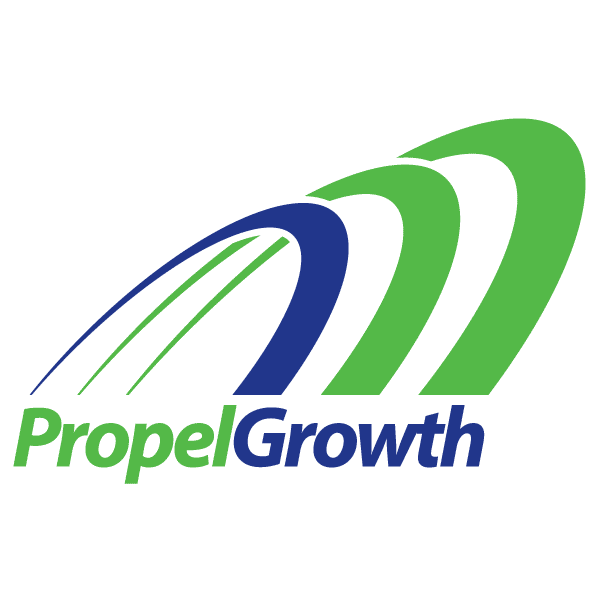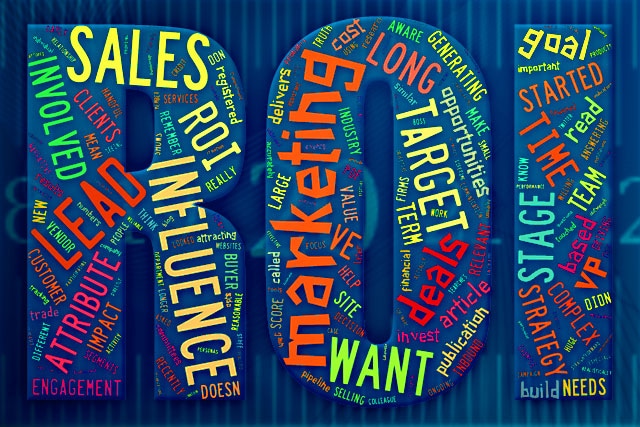![]()
“It doesn’t really matter what it costs, as long as we know we will get an ROI from the content marketing investment,” a CEO of a financial technology firm recently told me during a sales call. And isn’t that the truth? The value of a content marketing program should always outweigh its cost. Over the long term, your cost per sales opportunity and cost of sale should decline as your content program begins to produce results. But this takes time. Here’s how long it took to get an ROI from our content marketing program.
So how do you ensure that a content marketing program delivers an ROI? Here are some tips for firms selling products or services that involve a long and complex buying process, where deal sizes and customer lifetime value are 6 to 7 figures or larger.
Start by answering some key questions that will drive your strategy:
What Is Your Goal for the Content Marketing Program?
Do you want to influence deals already in the pipeline, or add new opportunities to the funnel? Yes, you can do both, but I’d recommend starting with one very specific goal. 82% of B2B marketers say driving leads and sales is the most important objective. But for large and complex sales, I think that your strategy has to be even more specific in order to realistically measure your ROI.
What Buyer Audience Do You Want to Target?
What segment of your target market do you want to attract with your content? The more focused and targeted, the more effective your content will be. We have clients that target only a handful of specific accounts that all have very similar attributes and needs. This level of targeting makes it much more straightforward to create highly relevant content. Research shows that buying committees in large financial institutions often include more than 10 people. So having a small group of accounts with very similar needs will make it easier to prepare content that is directly relevant to the various buyer personas involved in the decision. Then, once you’ve proven that your strategies work for this small target, you can build additional programs to target other segments.
What Stage in The Buying Process Do You Want to Impact?
If your goal is new lead generation, then how far into their buying process should they be? If you want to influence them early in the awareness and research stages, then your content and your KPIs (key performance indicators) for the program will be very different than if you want to find later stage opportunities. You’ll also have a longer wait to gain an ROI, but the value of deals is often higher if you’ve been involved in the vision creation stage.
If you want to influence deals already in the pipeline, then what stage in the process do you want to impact? Do you want to focus on late stage deals that are stalled, or early stage opportunities where the sales team needs help accessing more of the buyer committee?
The more precise you are with your goals, the more likely your strategy will deliver the desired outcome.
Are You Willing to Make a Long Term Commitment?
Are you willing to invest in building a long term audience that has opted in to your ongoing narrative? If your customers have a lengthy buying cycle, then you probably need to build an engaged audience. This has a longer term ROI, but it also delivers more stable and reliable results over time.
Set Reasonable Goals as You Get Started:
If you’re just getting started in content marketing, it’s important to learn to walk before you run. Set goals that are not based on attracting huge numbers of leads, but that focus you on:
- Building an audience of the RIGHT makeup
- Gaining an audience who opts into participating in your ongoing narrative
- Measuring engagement within your specific target audience
Influence Isn’t Easy to Measure
Influence is hard to measure accurately, especially in large, complex sales. We can use marketing automation software to measure engagement. But that’s really just a proxy for influence. Just because marketing touched a lead that ultimately bought doesn’t mean that marketing influenced the sale. Likewise, just because marketing didn’t record a touch doesn’t mean that your content didn’t influence a sale.
For example, an industry publication selling events and advertising just closed a huge deal with a VP of Marketing from one of their biggest target accounts. The VP had gone to the publication’s website, looked up the number, and called Sales. So Sales got all the credit for the lead. “This was very frustrating,” said the head of the publication’s marketing department. “We’d been nurturing two other people in that VP’s department for months, and their lead scores had been steadily creeping up. But because the VP had not interacted on our site, it was assumed that we had not influenced the decision.”
The True Influence Can’t Be Easily Measured With Today’s Tools
Here’s what happened with that customer.
- A marketing assistant clicked a link in a Tweet and arrived at site. She read a blog article and left.
- A few days later, she returned, visited a few more pages, read a few blog posts, then left again.
- She returned to the site a third time, and this time, registered for a white paper (in PDF form), so Marketing captured the lead. Their marketing automation platform attributed the earlier anonymous activity to this lead, and calculated a lead score.
- The assistant emailed the PDF she downloaded to a colleague. Marketing saw this because they’re using PDF tracking tools, and they further increased the lead score.
- The colleague read the article, realized it was relevant, printed and handed the article to his boss – the VP of Marketing, who happened to have a very low opinion of this particular publication’s services.
- The article changed the boss’s attitude, and after discussing with her team, she decided to check out the vendor.
- The VP asked a staff member to contact vendor’s sales team. This staff member had never registered on the site, and was therefore not being tracked as a lead.
- Sales registered the call as an inbound phone lead, and Marketing got no credit for generating or influencing the lead. So the sale was not attributed to the content marketing program that actually generated it.
Account-Based Measurement Can Help
For complex sales, if you look to measure the impact of marketing based on account activity and engagement rather than based on individual leads, you will get closer to being able to measure true influence. It also helps to invest time educating the Sales team on the marketing strategy and how Marketing expects the content to influence and support the sales process. But even if you have perfect communication, measuring ROI will still not be an exact science.
Attribution Is Usually Misleading
Most marketers want to attribute a lead to a specific piece of content, event or campaign. But even in our case, we can’t tell you exactly what impact any individual program or content piece has had on deals we’ve won.
Marketing automation systems are not usually accurate in demonstrating how someone actually first became aware of your company. Before Google stopped providing keywords for most searches, 90% of first time visitors to most of our clients’ websites searched for the company name, meaning they were already aware of the vendor.
So in my own sales work, I ALWAYS query every new inbound lead about how they found us. In every case, they’ve seen our content in multiple places. So I can’t attribute any one campaign to generating the lead.
I’ve also found that our content influences the relationship both before it starts and after they become a client. For example, one of our clients originally called us based on the relationship I’d built with him on Twitter. When we first spoke, he did not recall that I’ve been heavily involved in the FIX Trading Community where he’s also very involved, or that I’d been on a panel with him at a recent conference. He did not remember reading our content on TabbFORUM, and he didn’t remember seeing my content on LinkedIn. All he remembered was our Twitter conversations.
But if you ask him today how he found us, his answer is very different. He found us because of my background in electronic trading, my involvement in industry organizations, from reading my industry articles, and from seeing me speak.
So what’s the truth? Probably all of the above.
What I do know for certain is that I have not made a cold call in four years. I don’t have a sales team at PropelGrowth, we don’t do outbound sales calls, we don’t put up booths at trade shows, etc. Our content and inbound marketing programs influence 100% of our growing book of business. I think that’s a pretty reasonable ROI. 🙂
What’s your take on this? Let your voice be heard in the comments box below.
- 4 Steps to Optimize Your LinkedIn Profile for Sales Prospecting – February 12, 2021
- The Reality of Cold Calling for B2B Sales – January 11, 2021
- Can Inbound Marketing Generate Enough Leads? – January 9, 2021








One response to “How Do You Measure the ROI of Content Marketing?”
[…] Last week, I talked about the difficulty in measuring true influence when calculating the ROI on content marketing. […]